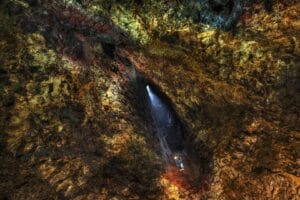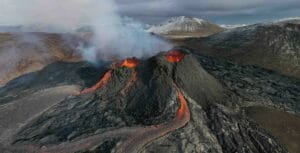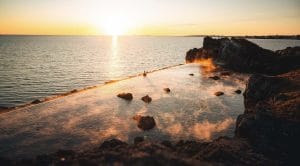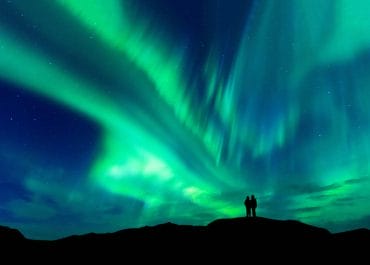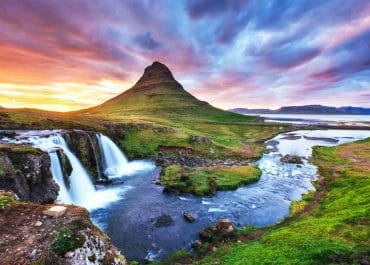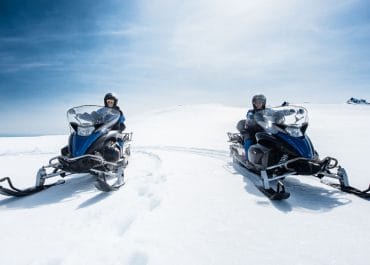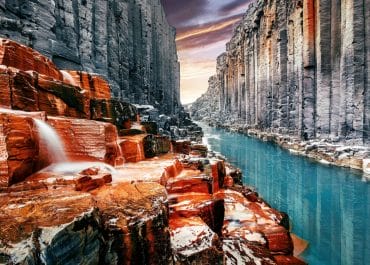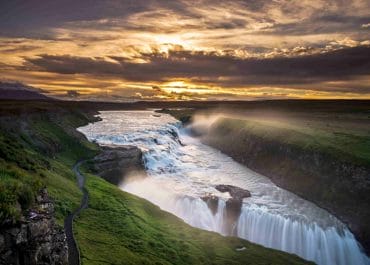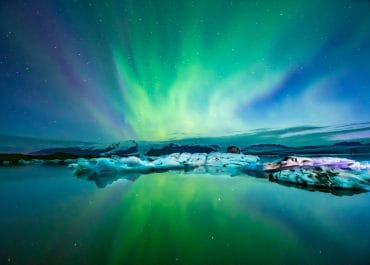Iceland is a unique country blessed with such a richness of nature. All that you need for rejuvenation is there in the country, be it waterfalls, canyons, national parks, and more. National parks are one of the highlights of this Arctic country. There are many travelers curious to know what is it that sets these national parks aside from the rest of the country? The interesting part is Iceland seems like a giant and wholesome national park. A myriad of mesmerizing landscapes is promised by the trip to Iceland. It is more than valid to ask from where did the need arise to declare specific places like National Parks. Along with the reasons for this, we have explored much more about the national parks in the country.
There are three official national parks in the country – Þingvellir, Vatnajökull, and Snæfellsjökull. The red tape, strict rules and regulations, and respect around them are the three prime reasons for the formation of these national parks. Icelanders have a strong connection and regard to their countryside. This high regard extends to these national parks, another reason for their official recognition.
The geology of the respective areas in which these national parks are situated is also a reason for their special status. These areas have a strong cultural significance and rich history which makes them unique and important. All these reasons, when combined, give an insightful context from which tourists can obtain a greater understanding and anecdotes into what makes the country so beautifully different.
The three national parks are well maintained and governed by Umhverfisstofnun, the Environment Agency of Iceland. Umhverfisstofnun is mainly responsible for the promotion of environmental protection. The agency also spreads awareness about the sustainable use of natural resources and provides travelers with insights about the parks themselves. Now that you have considerable common information about the parks, let us delve deep into each park.
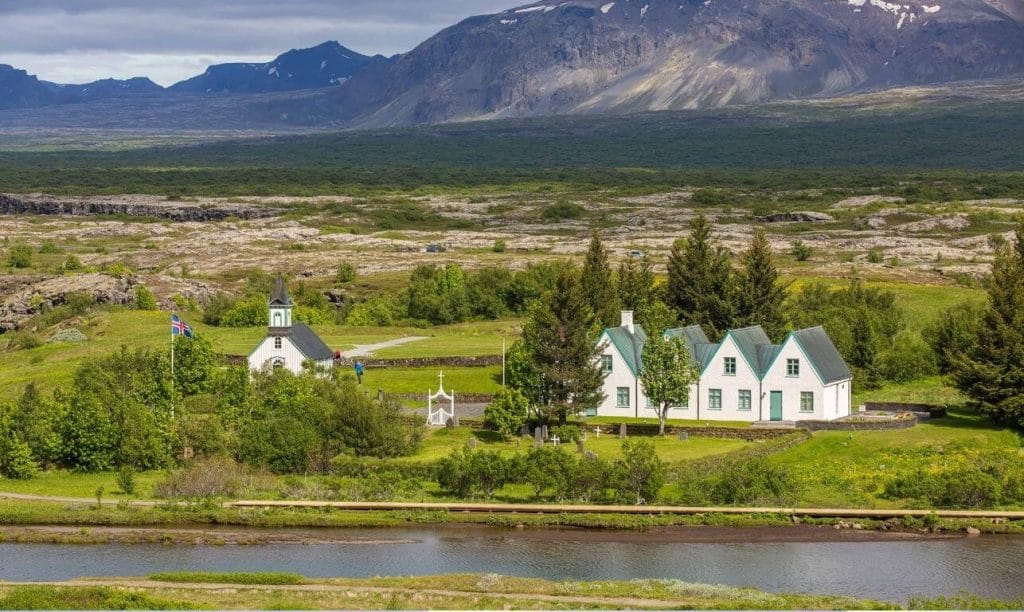
Þingvellir National Park
Þingvellir National Park is the country’s oldest national park. It is also the sole park in the country recognized by UNESCO as a World Heritage Site. This special status is bestowed upon the park because of its unique geology and historical & cultural significance. This recognition was awarded in 2004. Þingvellir National Park is considered a marvel located on the Golden Circle sightseeing route. Þingvellir National Park is a part of Bláskógabyggð municipality. The park is 45 kilometers away from the capital city Reykjavík, which means that you can reach here in almost an hour’s drive. Along with the majestic dramatic Gullfoss waterfall and the geothermal hub, Geysir, Þingvellir National Park is one among the three popular stops on Golden Circle Route. (“Fields of Parliament”)
The Historically Rich National Park
In the late 1920s, Þingvellir was declared a national park. The status was upgraded to safeguard the remnants of the parliament site. The formation of the place dates back to 930 AD. It was the time when the first National Assembly or Alþingi came into existence. It is also speculated that Alþingi is the foremost democratically elected parliament all over the world. Without a doubt, this place and time can be credited for the formation of Iceland. Íslendingabók, also known as the Book of Icelanders is a historical book that mentions this time. The book was authored between 1122-33 by the priest, Ari Þorgilsson.
You will be amazed to know that the place is important for religious reasons as well. The people of Iceland finally decide to move over their pagan beliefs and adopt Christianity. This shift towards Christianity happened in the year 1000 AD. The impact of this shift is still apparent in the country as the evolution of Icelandic culture. The explorers get a chance to stroll and explore the spots covered by the early settlers.
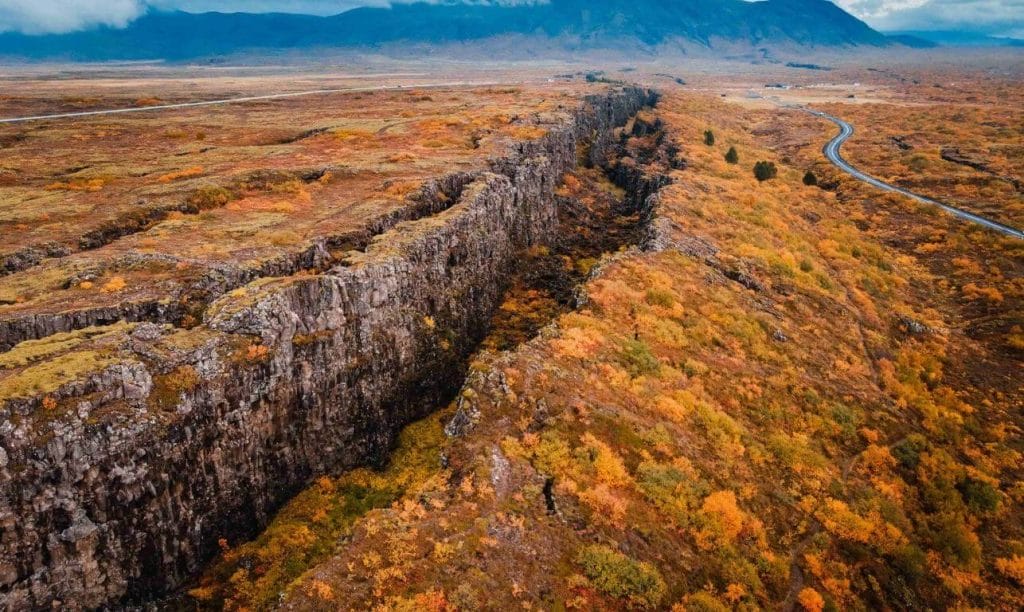
Geology of the Place
The striking geology of the place is one of the prime reasons why UNESCO designated Þingvellir National Park as a World Heritage Site. The astonishing place is one of the only two places on the planet where explorers can experience both the North American and Eurasian tectonic plates emerging from the earth. You will also get to see no man’s land which is a graben valley, which is a place in the middle of the plates. Beneath the thick layers of beautiful Icelandic moss, there are astounding rock formations, dry lava fields, and ravines.
Things that Explorers can see in Thingvellir
Þingvellir National Park is a vast and mesmerizing arena where you can discover many natural gems. You can begin with the majestic waterfall, Öxarárfoss. The waterfall starts flowing from the river Öxará. It eventually tumbles down over the side of the Almannagjá gorge, into a pool beneath. ‘Axe Falls’ is another name and English translation of Öxarárfoss. The origins of the ax being used in the name of the waterfall are not clear. Some claim that the name is the result of the multiple executions that happened at this place in earlier times. Alternative theories also point out that the name derives from an ax. This signifies land ownership at that time. There is a path constructed along the Almannagjá with display boards. Visitors will get more useful information about the national park from these display boards describing the area’s incredible history. They even guide you towards particular interesting spots. There is the Law Rock or Lögberg and Drekkingarhylur, also known as the Deep Drowning Pool. Drekkingarhylur dates back to the 17th-century Icelandic judicial system. A woman accused of adultery was punished here. This incident makes this place even more interesting.
Magnificent glacial spring Silfra Fissure is also a part of Þingvellir. The fissure is one of the top ten scuba diving and snorkeling sites of the world. If you are a water sports enthusiast, the place is perfect for you. Crystal-like water visibility and rejuvenating natural scenes are offered by the place. One-way run through Silfra will take you around an hour. Thingvellir Church and the Prime Minister Summerhouse are worthy stops to spend a good time in the park.
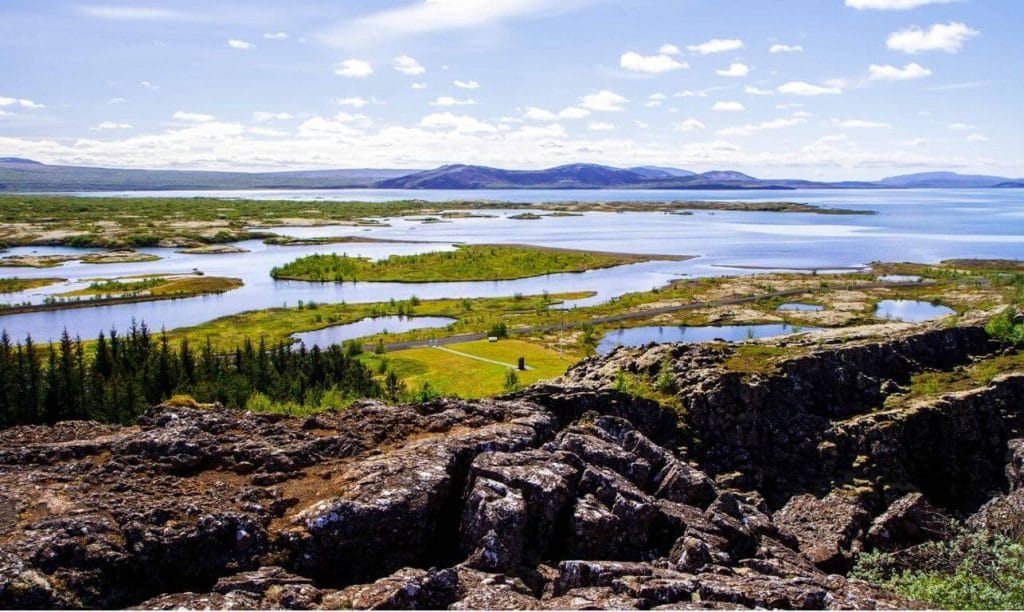
Other Noteworthy Information
You can camp at Þingvellir in the two permitted areas. The camping areas are open from the beginning of June to the end of September. There is another campground around the Visitor’s Centre which remains open from October to May. You do not need any reservation to camp at Þingvellir. The Visitor’s Center is a place to buy angling upon the first arrival at the national park. The camping prices at Þingvellir are 1300 ISK a night per person for adults between the ages of 13 years to 67 years. The added charges of 300 ISK for each tent/campervan are also there. For senior citizens and specially-abled visitors, the charges are 650 ISK a night per person. The additional charge of 300 ISK follows for each tent/campervan. If you are in a group of more than 10 people, a 15% discount will be offered on the overall price. Overnight camping is free for children under 13.
This is a good place to visit with children as it offers much significant information about the country. Those who want to experience adventure first hand must visit here. Just ensure that you have all the necessary information before going for snorkeling and other sports. Also note that you need to book your snorkeling adventure well in advance.
Snæfellsjökull National Park
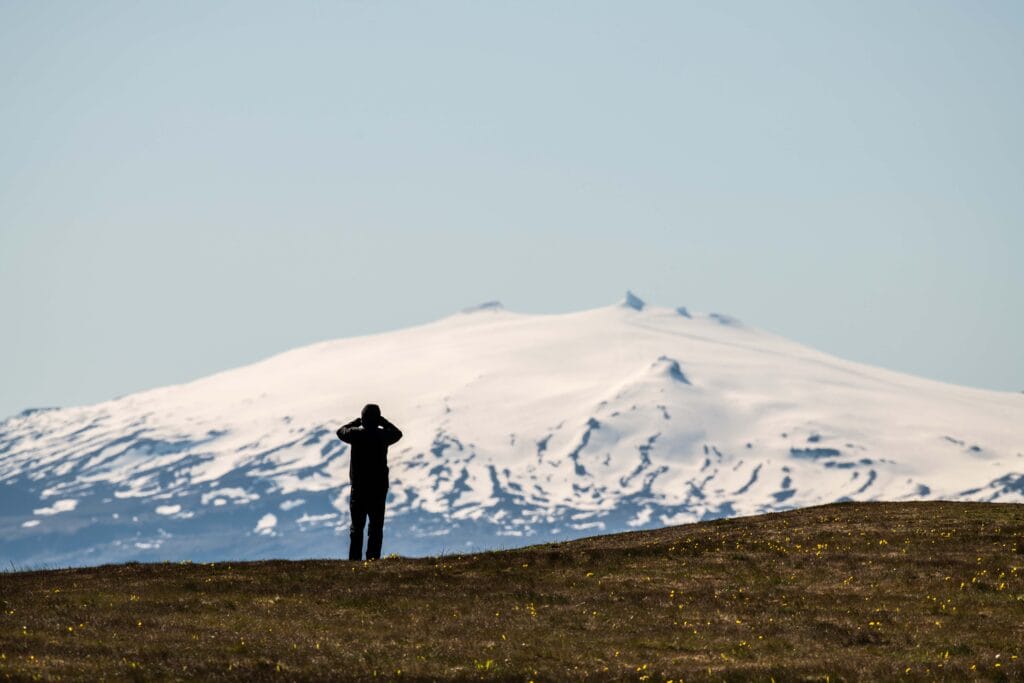
Snæfellsjökull National Park is another notable place to explore when you are in Iceland. It was founded in 2001 through the dire need to preserve the heritage of the region. The exceptional natural diversity and beautiful cultural sites are the markers of the area. The area of the national park spans over 170 square kilometers of land. The park completely encircles the majestic 1,446 meters high Snæfellsjökull glacier-capped volcano. Among the Icelandic citizens, the place is lovingly called ‘Iceland in miniature’. Offering a variety to the tourists, the park consists of lava plateaus, rocky bays, cliffs with towering birds, sloping glaciers, and more. Enriched with unspoiled nature, the national park is peppered with marine life and beautiful fishing villages.
Geology and History of the Park
If you are coming from Reykjavík, you will have to undergo a 190-kilometer journey crossing the beautiful locales. Once you reach the park, you cannot help but notice the region’s main focal point, the magnanimous Snæfellsjökull glacier-capped volcano. The gigantic and omnipresent landscape is central to the landscape. Initially named Snæfell, the volcano is known as ‘Snæfellsjökull’, to avoid confusion with the two other mountains called Snæfell. It is believed to be older than 700,000 years and visible from 120 kilometers away. However, looking at it from up close is an incredible experience. Make sure that you pack your camera for this tour as it offers ample opportunities to click and collect amazing scenes.
You can explore the Archaeological sites such as Forni-Saxhóll farm, Berutóftir, and Írskubúðir. These sites indicate that the vicinity was inhabited even centuries back. The settler activities started after the last eruption of the volcano which speculatively happened between 50-350 AD. The ground was slowly transformed by lava flows during this eruption, forming various cave networks and craters. You can visit these formations.

Artistic Influence
Snæfellsjökull has fascinated artists throughout the world. There are multiple paintings, poems, and musical pieces that are dedicated to this place. The first part of Bárðar saga Snæfellsáss, legendary saga of the people of Iceland, is set in the area. Snæfellsnes makes multiple appearances in the medieval manuscripts. A 13th Century scripture, Laxdæla Saga is set in the region. Modern literature of Iceland has heavy inspirations from Snæfellsjökull.
Things to Explore
A tour of this national park offers you some memorable scenes. You can start by exploring Sönghellir or as it is popularly called ‘Cave of Song’. The distinctive and fun echoes that can be made inside the cave have led to its naming. Although there are different historical carvings on the walls of the cave, please refrain from carving anything in the cave. It is considered disrespectful in Iceland to spoil sites in any way. Vatnshellir Cave is another worthy cave to stop at. There is a spiral staircase that leads the visitors into a colorful chamber, formed by age-old magma flows. Centuries-old, the 200-meter-long lava tube emerged from eruptions in the surrounding Purkhólar family of craters. Several years back Vatnshellir was closed for preservation purposes. You can now explore it with a licensed tour guide, but remember to book your tour in advance. One of the highly popular spots is Rauðfeldsgjá or Red-cloak rift. It is a beautiful 40-meter-deep rift into a mountainside. The tourists can easily cover the first part of this rift, while the terrain further becomes difficult and more slippery. You will be completely soaked by the end of the rift but there is a hidden waterfall to surprise you.
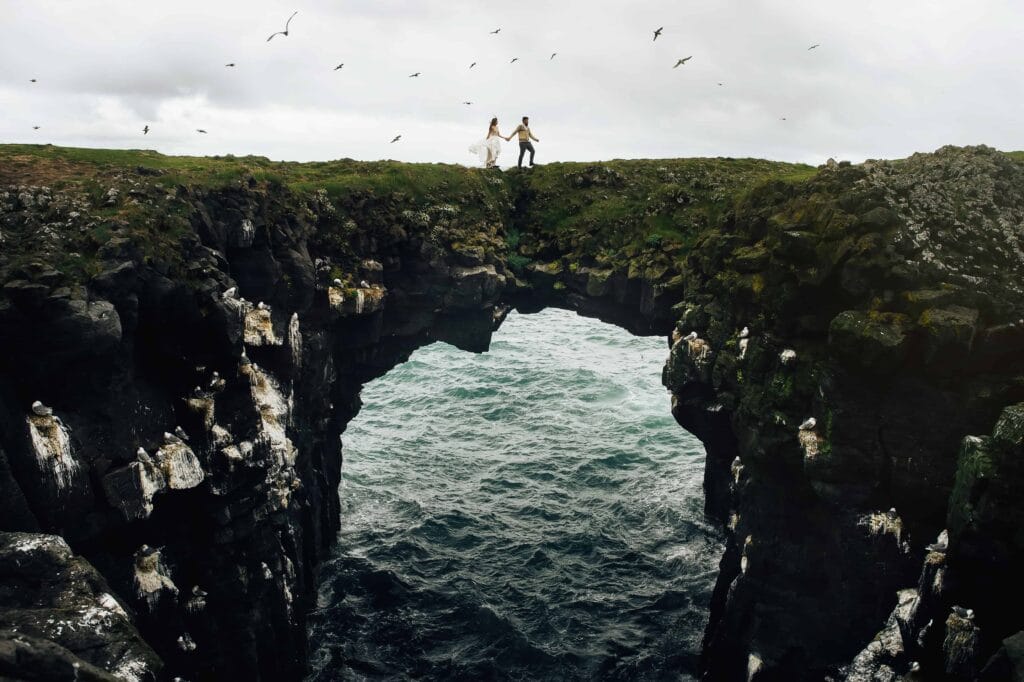
The small hamlets of Arnarstapi and Hellnar that are located right at the edge of the park, with their surrounding rock formations and cliffs along the coast, are other attractions. On peaceful days, the views from these small villages can be serene or stunning with the intensity of the waves crashing on the cliffs. Djúpalónssandur is a beautiful beach with black sands and pebbles. Right outside the park, near the town of Grundarfjörður, is the most photographed mountain in Iceland, Kirkjufell. You can spend some time in Grundarfjörður town if you are interested in wildlife. You can stumble upon Killer Whales or can take a whale-watching tour.
Other Important Information
You cannot find any camping grounds inside the park, but there are three campgrounds in the area open to visitors during the summer months. The first one is in Ólafsvík, the largest urban settlement in the vicinity. It is open from mid of May to mid of September every year. You can find all the basic facilities here such as a service center, toilets, and showers, hot and cold water facilities. The second place to camp, is the village of Hellissandur, while the last is at Arnarstapi, in the south of Snæfellsnes Peninsula. The other two campsites offer amazing cafes to eat in and all the basic facilities.
Vatnajökull National Park

The largest National Park in Iceland, Vatnajökull National Park consists of Vatnajökull glacier, the largest glacier in Europe. The majestic glacier spans over 13% of Iceland’s total landmass. The park was first founded in 2008, combining two former National Parks, Skaftafell, to the south, and Jökulsárgljúfur, in the north. There are few recent additions such as Krepputunga, Lakagígar, and Jökulsárlón, which forms the final area of 14,000 square kilometers. You will see the true magic of fire and ice here as above the lava of the earth, there are freezing waters.
The Historical and Geological Insights
It is believed that the ice cap, Vatnajökull, started forming 2500 years ago. Some things or assemblies used the area for sheep grazing, particularly Skaftafell. Hunting for seals and collecting bird eggs were the sources of farmers’ livelihood in earlier times. There were several political disturbances during the centuries.
Vatnajökull covers 8100 square kilometers. On average, the ice is 600-900 meters thick. The dramatic ice cap hides beneath mountains and volcanoes including Grímsvötn and Bárðarbunga. Iceland’s highest peak, Hvannadalshnúkur, is located on the southern periphery. It towers at a height of 2109 meters.
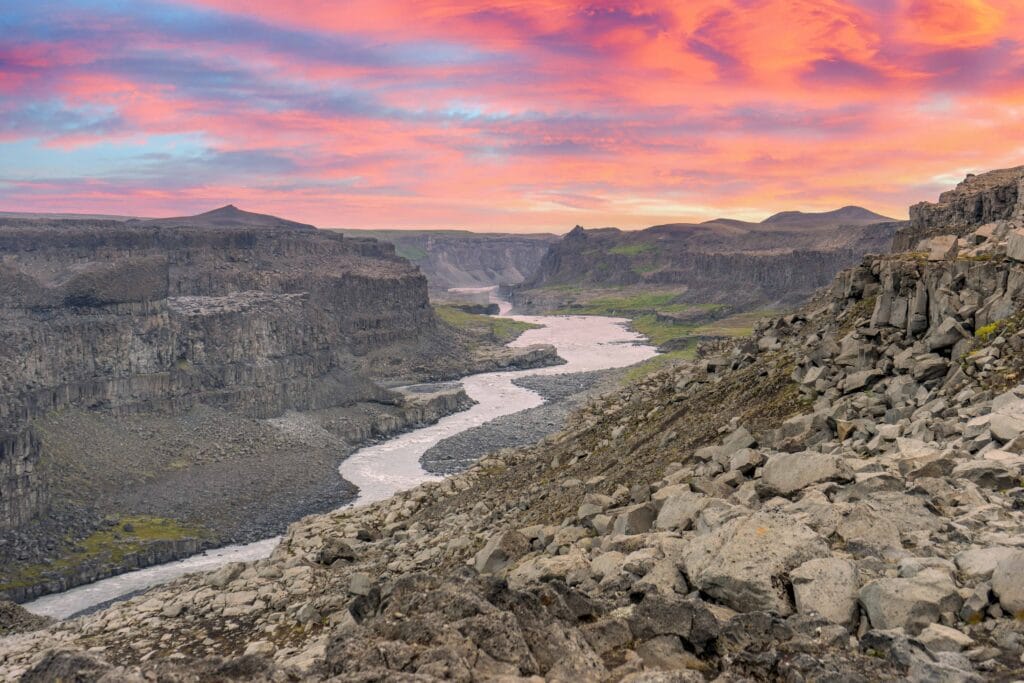
Things to Explore Here
You can find new ice caves in Vatnajokull that are formed every year with the melting ice. You can be a part of numerous caving and ice-climbing tours that happen every winter season. You can access the natural ice caves between November to the end of March every year. Some tours also start in mid-October. There are other memorable and incredible attractions such as the tallest mountain top and highest waterfall. There are multiple canyons and lagoons to discover. Iceland’s tallest waterfall, Morsárfoss is a relatively new part of the park and difficult to reach. In this way, the park is a perfect spot to discover something new every time you come. It is full of thrills and natural miracles.
There are four divisions- North, South, East, and West. You will find Askja Caldera in the north-western section of Vatnajökull. Jökulsárgljúfur canyon and portions of Jökulsá á Fjöllum are also there. A campsite and visitor’s center is situated near the horse-shaped canyon of Ásbyrgi. Nearby you will also find Dettifoss and Selfoss waterfalls. There is a second campsite in Vesturdalur for visitors. Towards the park’s western section, visitors will find Langisjór, the southwest corner of Vatnajökull. There are Lakagígar craters and an information center, near the town of Kirkjubæjarklaustur. The southern section reaches across Vatnajökull’s southeast, from Lómagnúpur mountain to Lónsöræfi. The Eastern section involves northeast Vatnajökull, along with sections of the Snæfellsöræfi hiking area and the beautiful Kverkfjöll mountains.
Jökulsárlón is among the best attractions in the park. It is a mesmerizing lagoon embellished with aquamarine icebergs. The Diamond Beach is another notable sight, where the icebergs meet the ocean. By the coastline, visitors can see a playful seal colony. This spot offers such energetic vibes that will stay in your memory for a long time. Skaftafell Nature Reserve is also considered one of the best locations in the National Park. Skaftafell includes breathtaking views of the glacier, some great hiking routes and one of the best campsites in the country.
Some Useful Information
In the campsites at Vatnajökull National Park, you are not allowed to play loud music, keeping the noise at a bare minimum. Only minimal alcohol consumption is encouraged during the night. Creating a mess and dropping litter at the site is not considered respectable in the country. You can accompany your pet to the campsites but no mess or noise will be tolerated by the authorities.

Travel slowly and maintain a list of places that you do not want to miss. These National Parks have so many attractions but you may not have time for all of it. Accompanying children to parks is always a good idea. Just ensure that they are kept away from difficult and dangerous terrains.
Ensure that you keep the areas neat. These National Parks are highly respected and have the authorities to maintain them. They are formed for the protection of wildlife and nature. Hence, you are expected to follow all the rules and regulations. Apart from this, let your spirits run free and explore as many places as you can.


